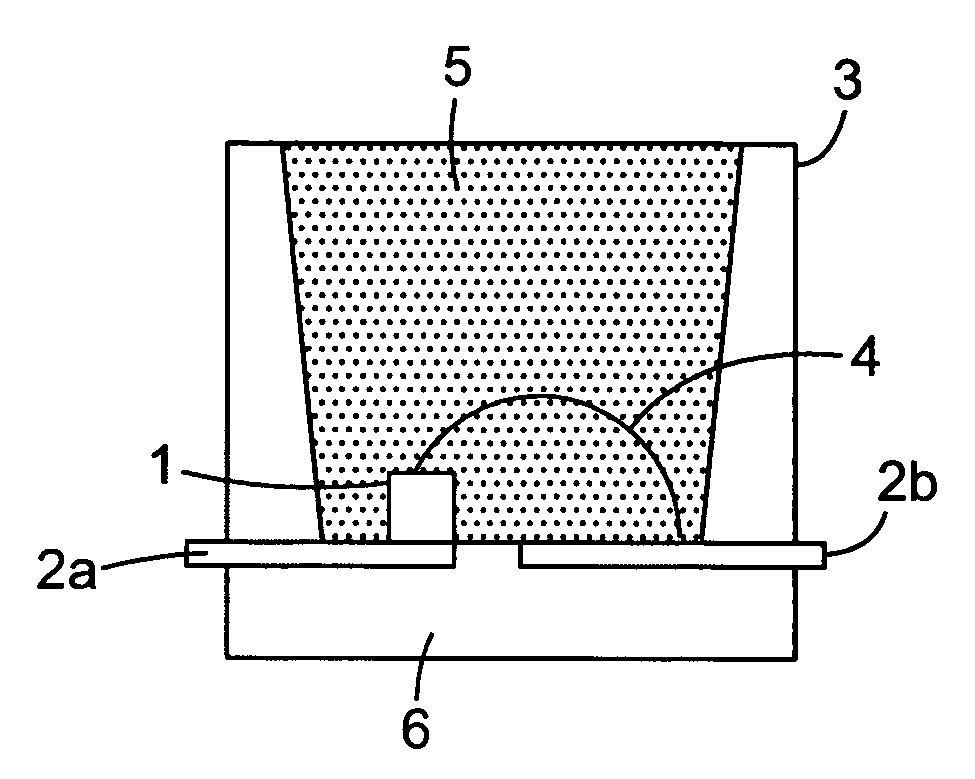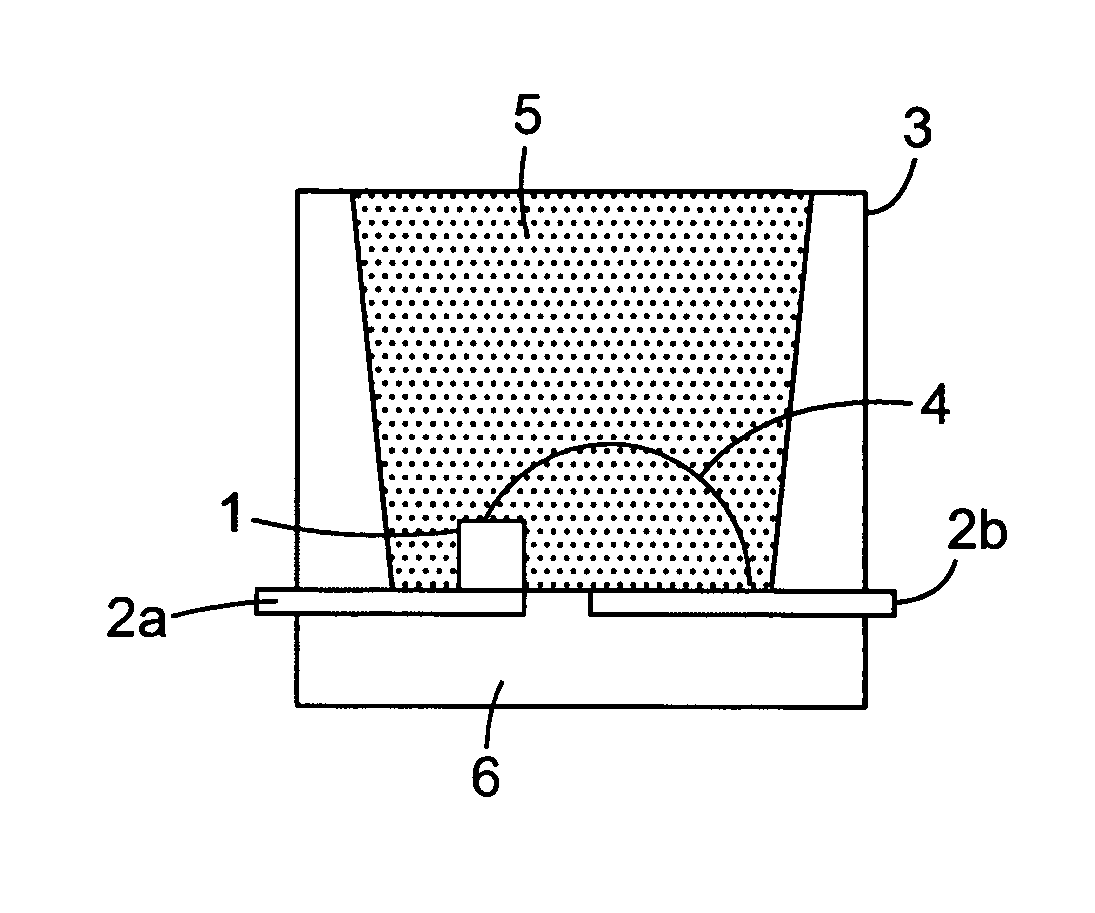Method of making light emitting device with silicon-containing encapsulant
a technology of silicon-containing encapsulation and light-emitting device, which is applied in the details of semiconductor/solid-state devices, semiconductor devices, electrical apparatus, etc., can solve the problems of stress-induced breakage of wire bonds, and achieve the effect of rapid cure mechanism and high refractive index
- Summary
- Abstract
- Description
- Claims
- Application Information
AI Technical Summary
Benefits of technology
Problems solved by technology
Method used
Image
Examples
example 1
Visible Light Cure
[0049]A mixture of siloxanes consisting of 10.00 g (olefin meq wt=3.801 g) of the organopolysiloxane prepared as described in the previous paragraph and 0.44 g (Si—H meq wt=0.111 g) of (CH3)3SiO—[Si(CH3)2O]15—[SiH(CH3)O]25—Si(CH3)3 (Dow Corning Corp., SYL-OFF® 7678) was prepared in a 35 mL amber bottle. A catalyst stock solution was prepared by dissolving 22.1 mg of Pt(acac)2 (wherein acac is acetoacetonate, purchased from Aldrich Chemical Co.) in 1.00 mL of CH2Cl2. A 100 μL aliquot of this catalyst stock solution was added to the mixture of siloxanes. The final formulation was equivalent to a ratio of aliphatic unsaturation to silicon-bonded hydrogen of 1.5 and contained approximately 100 ppm of platinum.
[0050]Into the blue LED device described above was placed approximately 2 mg of the final formulation described above. The LED was illuminated for 2.5 minutes at 20 mA. The encapsulated device was allowed to sit for an additional 5 minutes. The encapsulant was ela...
example 2
UV Light Cure
[0051]An encapsulated LED device was prepared and evaluated in the same manner as described in Example 1 except that 21.1 mg of CpPt(CH3)3, prepared as described in Boardman et al., Magn. Reson. Chem., 30, 481 (1992), was used instead of 22.1 mg of Pt(acac)2, and illumination was carried out using a UV lamp at 365 nm. Efficiency increased from 8.9% before encapsulation to 11.6% after encapsulation.
Further Embodiments
[0052]Examples 3–6 illustrate further embodiments of the invention that can be made.
example 3
Visible Light Cure
[0053]A mixture of siloxanes consisting of 10.00 g (olefin meq wt=1.46 g) of the vinyl siloxane base polymer H2C═CH—Si(CH3)2O—[Si(CH3)(C6H5)O]n—Si(CH3)2—CH═CH2 (Gelest, Inc., PMV-9925) and 1.64 g (Si—H meq wt=0.16 g) of the siloxane crosslinking agent H(CH3)2SiO—[SiH(CH3)O]m—[Si(CH3)(C6H5)O]n—Si(CH3)2H (Gelest, Inc., HPM-502) is prepared in a 35 mL amber bottle. A 100 μL aliquot of a Pt(acac)2 solution in CH2Cl2 prepared as described in Example 1 is added to the mixture of siloxanes. The final formulation is equivalent to a ratio of aliphatic unsaturation to silicon-bonded hydrogen of 1.5 and contains approximately 100 ppm of platinum.
[0054]Into the blue LED device described above is placed approximately 2 mg of the above final formulation. The LED device is illuminated for 2.5 minutes at 20 mA and then allowed to sit for an additional 5 minutes. The encapsulant is elastomeric and cured as determined by probing with the tip of a tweezer.
PUM
 Login to View More
Login to View More Abstract
Description
Claims
Application Information
 Login to View More
Login to View More - R&D
- Intellectual Property
- Life Sciences
- Materials
- Tech Scout
- Unparalleled Data Quality
- Higher Quality Content
- 60% Fewer Hallucinations
Browse by: Latest US Patents, China's latest patents, Technical Efficacy Thesaurus, Application Domain, Technology Topic, Popular Technical Reports.
© 2025 PatSnap. All rights reserved.Legal|Privacy policy|Modern Slavery Act Transparency Statement|Sitemap|About US| Contact US: help@patsnap.com


